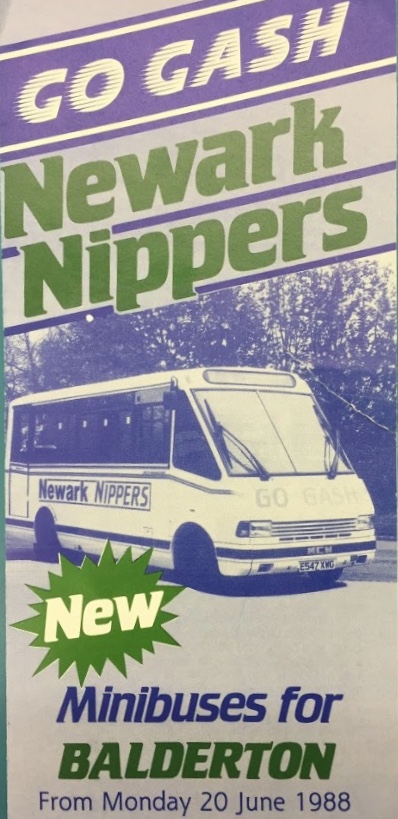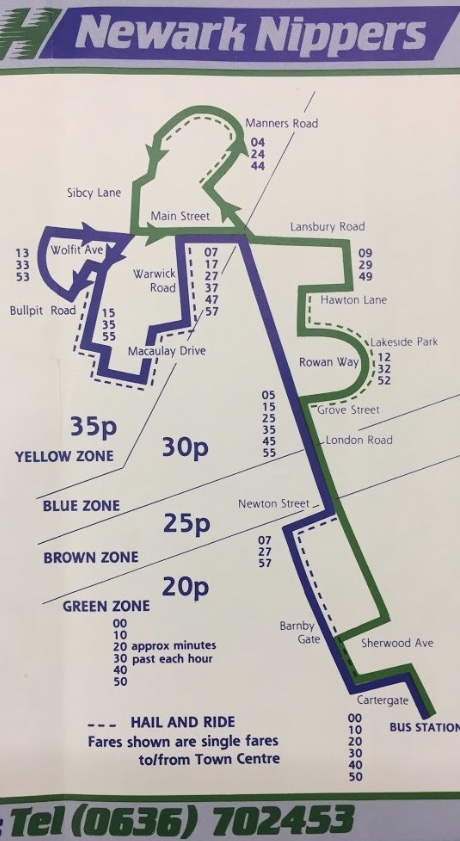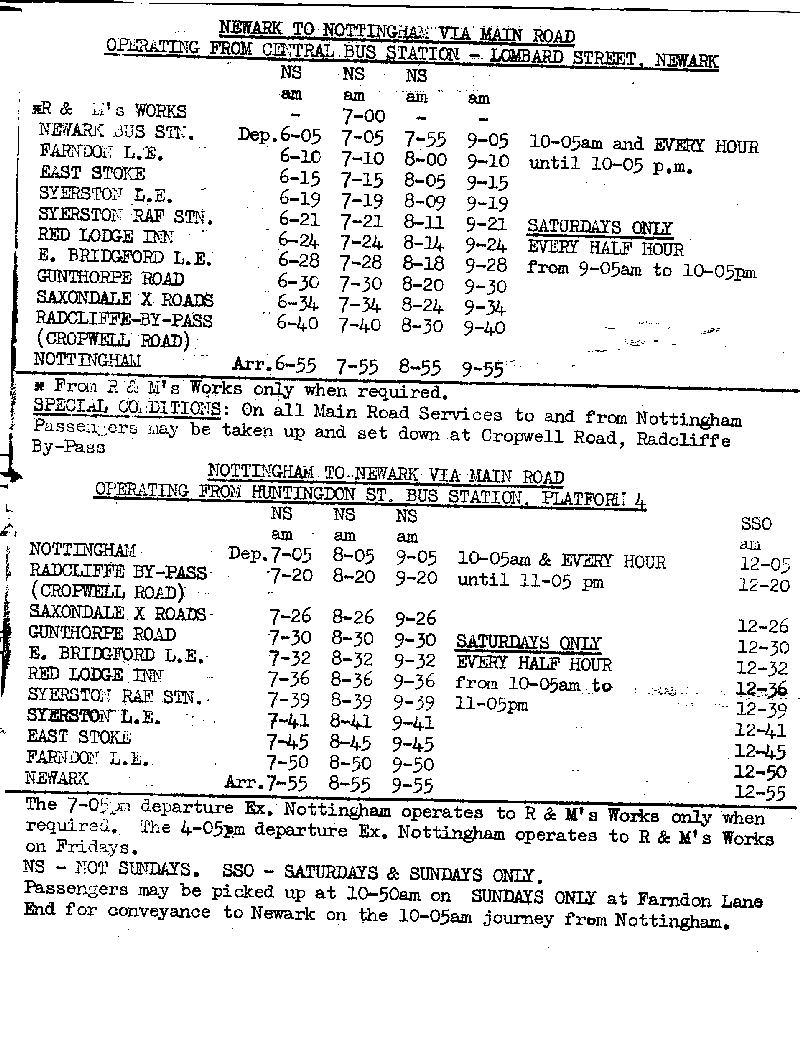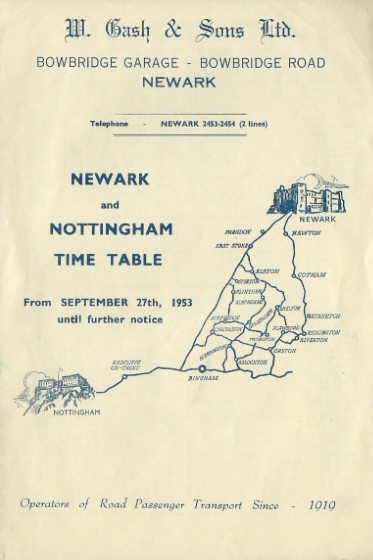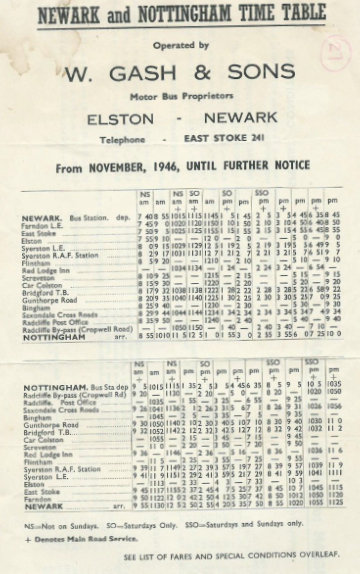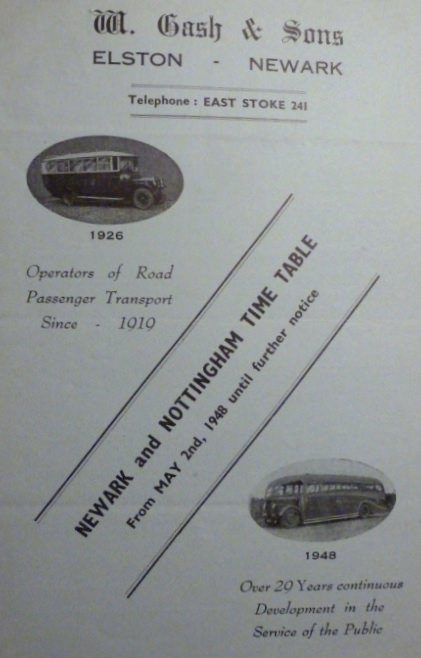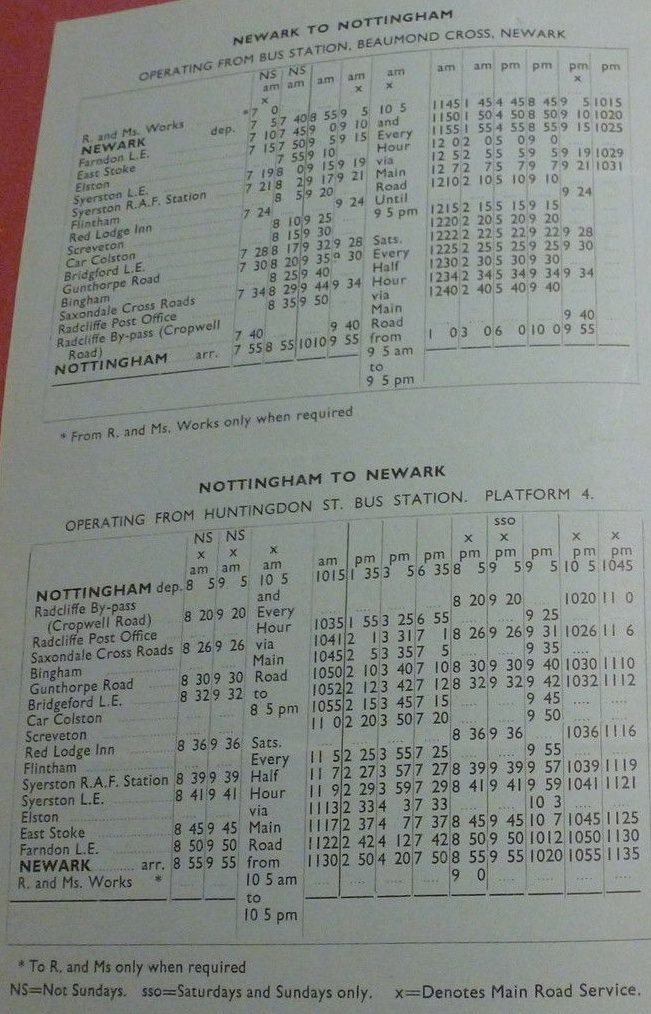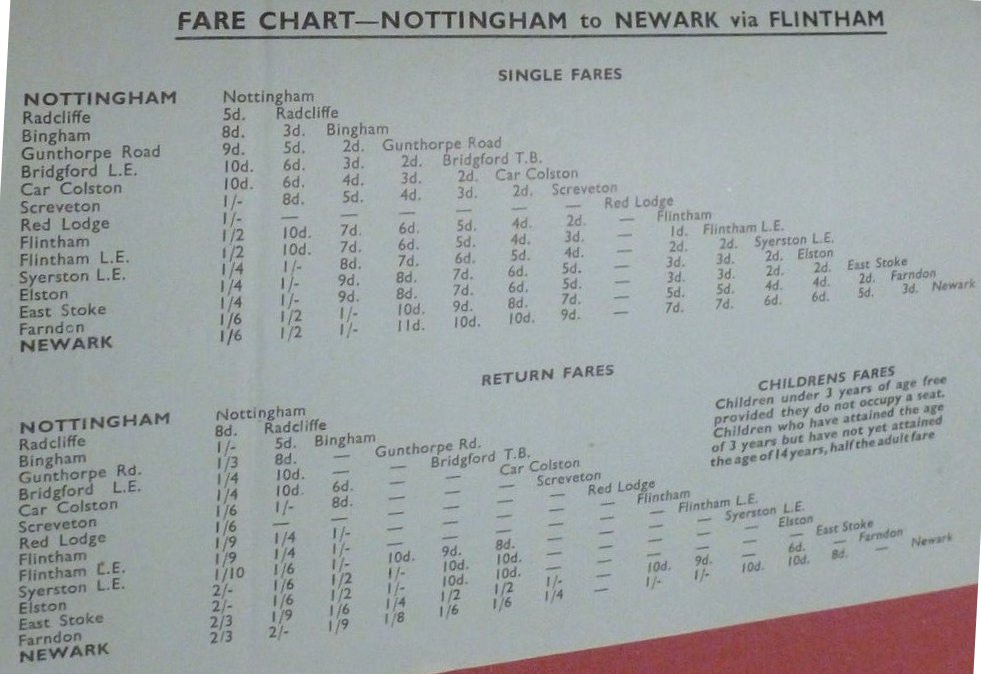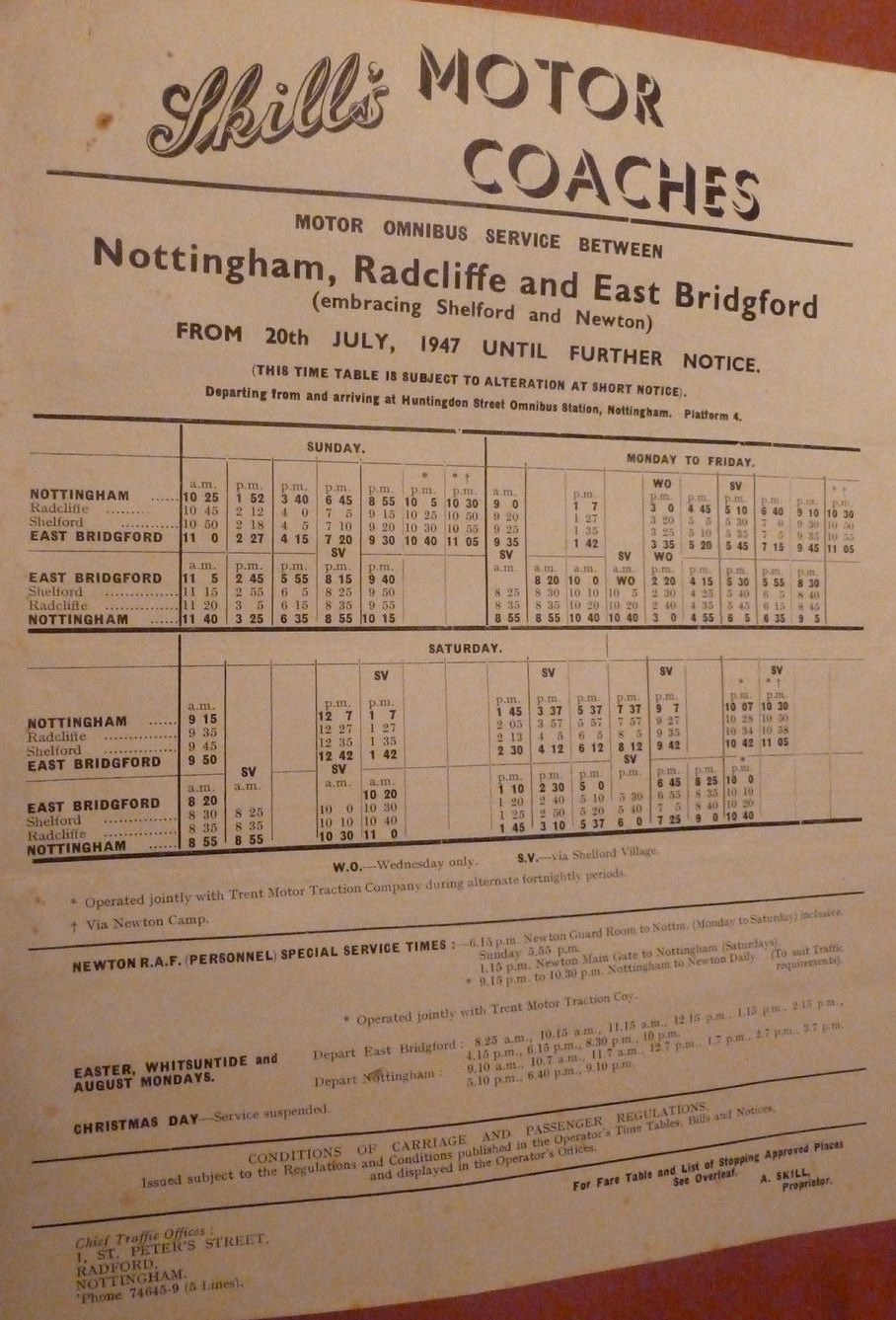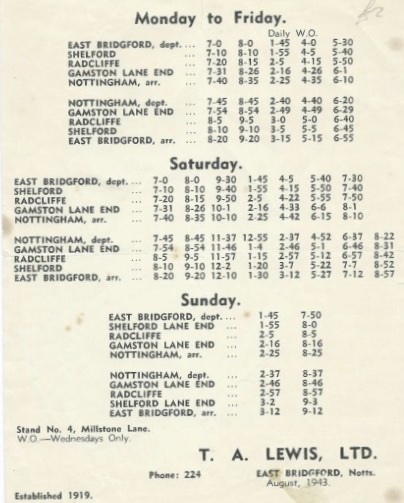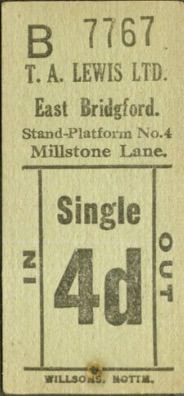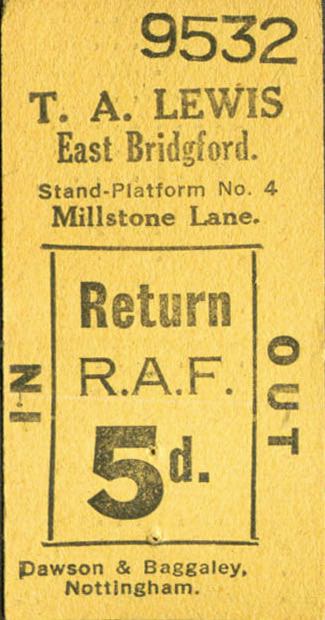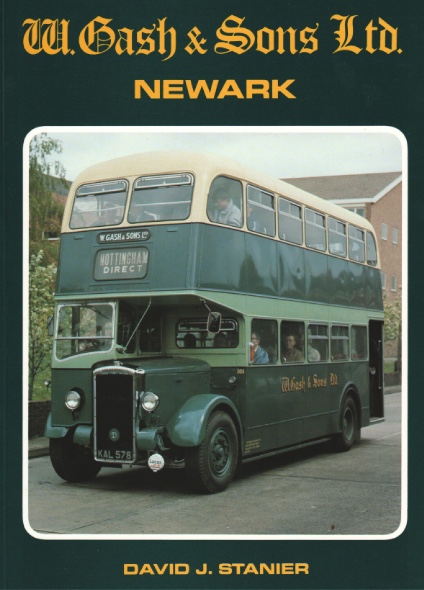|
|||||||||||||||||||||||||||||||||||||||||||||||||||||||||||||||
|
|||||||||||||||||||||||||||||||||||||||||||||||||||||||||||||||
| Please note - this is a site of historical record and does not contain current service information | |||||||||||||||||||||||||||||||||||||||||||||||||||||||||||||||
|
The
long established business of W. Gash & Sons
Ltd. operated several routes between Newark-on-Trent and Nottingham for
a period of many years. After expansion into Newark town services at
the time of bus deregulation in 1986, following a surprising reduction
in Road Car
operations in the town, the firm with its fleet of thirty-nine blue,
green and cream liveried vehicles was acquired by Yorkshire
Traction in April 1988 and absorbed into Lincolnshire
Road
Car (also by then part of the Yorkshire Traction Group) in May
1989. The
Gash
name was not retained by Road Car. Sixteen years later, Road Car
themselves passed into the ownership of the Stagecoach group in 2005.
The Gash
business grew from simple
foundations. It was in the
village of Elston that the local miller, William Gash, and his wife
Effie
acquired a secondhand Beeston-Humber truck AL1174 which he then used to
transport corn and other goods to and from
the market in Newark. In 1919 William had added some bench seats
and started to convey passengers as well as commodities to market.
In 1921 William's brother Alan joined the business and a Ford Model T
was aquired to replace the Humber. The Wednesday service to
Newark was followed in 1922 by a Saturday service
from Elston to Nottingham via Flintham, Screveton and Car Colston.
In 1926 Gash bought his first 'proper' bus – a 20 seater
Reo-Sprinter, the chassis made in America but assembled in Britain.
This was fitted with a body made by the Bracebridge Body Company of
Lincoln. Then in 1928 a second bus, a Chevrolet, was bought and the
firm (now trading as Elston Motor Service) from October began running a
daily service between Elston and Newark for workmen and schoolchildren.
Also in 1928 the market day service to Newark
was extended back to start from Hawksworth and the operation between
Elston and Newark became daily. The
business, two vehicles and routes of
Garrood of East Bridgford were acquired in 1932; they had traded as The
Fairway, and had also operated from Nottingham to Newark, but via
Bingham and Staunton-in-the-Vale. Two routes now linked Newark to
Nottingham, one via Elston, Flintham and Bingham (daily); the other via
Staunton-in-the-Vale, Orston and Bingham (Wednesday, Saturday and
Sunday). By the time of the outbreak of the Second World War in
1939 the firm had added its
first diesel-powered buses to the fleet: two Daimlers with 5-cylinder
Gardner engines. Construction of wartime
RAF aerodromes at Newton near Bingham and Syerston near Elston brought
increased business to Gash, and these were busy days. This also
afforded the opportunity to deliver a new direct main-road service
between Newark and Nottingham in addition to the round-the-villages
routes.The direct route later developed to become the principal core
route of their bus operations. In 1945 the business and one vehicle of J. Goodwin of Flintham was bought. In 1947 the first two double-deckers arrived in the fleet, lowbridge Leyland Titans 48-seaters of 1930 vintage from Wigan Corporation. 1948 saw the introduction of the direct limited stop and busy service between Newark and Nottingham as portrayed in the timetable page below (note the inferred picking up restrictions). In winter 1948/9 a batch of four Strachan open platform, low-bridge bodied Daimler CVD6s, the Company's first new double deck buses, joined the fleet. (These four were rebodied in 1961 with new Massey high-bridge 61-seat bodies fitted with platform doors). In 1953, with a fleet
size of twenty six which had far outgrown the
original premises, the operating base was moved from Elston to a
purpose-built facility at Bowbridge Road in Newark. The
business
became a limited company the following year. Expansion into
continental tours came
in 1957. Celebrations were held to mark the 50th anniversary in
1969 and services then used the newly opened Broad Marsh bus station in
Nottingham from 31st October 1971; previously they had used Huntingdon
Street bus station alongside many other operators. During the
1970s the
Lincolnshire Road Car timetable booklets contained the timings for the
Gash services to Nottingham. The founder William Gash died in 1974,
aged 80. Some alterations to the
services and route pattern took place in the early 1980s.
|
|||||||||||||||||||||||||||||||||||||||||||||||||||||||||||||||
| Gash
were no strangers to the
operation of half cab rear entrance double deckers with their prolonged
use of a quartet of superannuated Daimlers. In the mid-1980s the firm
found that there were new opportunities afforded it by deregulation.
To meet the demand for buses, many second hand purchases were made with
even AEC Routemasters entering the fleet. Gash had, in the not too
distant past been famous for it's prolonged
operation of elderly Daimler half cab double deckers. Latterly
though, it's 'bus' requirements had been met by Leyland products,
particularly the Leopard. Purchases at this time now included an
ex-Greater Manchester Park Royal bodied
Daimler Fleetline and four Leyland Atlanteans. As mentioned above some gaps were left in the town services network at Newark at the time of deregulation in 1986, as Lincolnshire Road Car only registered some of their pre-existing routes in the area, omitting some of the better ones! Thus Gash introduced local routes from Balderton to Newark; Farndon via Newark to Coddington; and Newark to Collingham. Amongst vehicles acquired for this purpose the fleet now included ex-London Transport 64-seater Routemasters 1990 (ALD990B), 2065 (ALM65B) and 757 (WLT757). There were also seven Metrorider minibuses, the 'Newark Nippers'. The 'Go Gash' branding was introduced and an expanded geographical area of operations post-deregulation led to a four vehicle out-station being set up at Sutton-on-Trent. October 1987 saw Gash taking over the Newark to Grantham route of Pulfrey of Great Gonerby. |
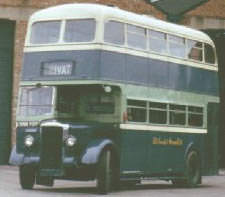 |
||||||||||||||||||||||||||||||||||||||||||||||||||||||||||||||
|
In
1988 the Gash fleet
had grown to comprise thirty eight vehicles, of
which 14 were coaches, 8 were dual purpose, 4 were Bristol single-deck
buses and 12 double-deckers; the latter included the three Routemasters
as well as eight Atlanteans and perhaps their most celebrated vehicle,
KAL578 a 1948 Daimler CVD6 with 61-seater Massey body (it had been
rebodied from Strachan in 1962; it is now owned by Johnson Bros
of Worksop and sometimes seen at rallies). Perhaps the firm
overstretched itself at this time with some unreliable vehicle
purchases and expansion. Then came the sale of the business to
Lincolnshire Road Car (at the time a subsidiary of Yorkshire Traction;
both passing to the Stagecoach group in 2005). The late Frank Carter
OBE, Chairman of the Traction Group, commented
later that it had been a bad mistake to buy both Road Car and the Gash
business in 1989.
The stencilled timetables illustrated below are taken from an undated eight page duplicated timetable booklet. One page shows the Newark to Leicester service which was operated three days a week jointly with Barton Transport. The other is the hourly 'main-road' route from Newark to Nottingham (half hourly on Saturdays). This busy route was supplemented by two other services, a daily route from Newark to Nottingham via Flintham six times a day, which in practice made connection with the main road route at Toll Bar Farm, East Bridgford Lane End, whilst the bus from Newark went on to serve Bingham. The third service went from Newark to Nottingham by way of Orston and Bingham, running on Wednesdays, Saturdays and Sundays. Before the "Go Gash" days of the 1980s and the Routemaster operated Newark town services (such as the 83 to Balderton) the firm of Gash was remembered for those Daimler CV deckers. Happily several of Gash's vehicles have been preserved (in non-operational condition) by Marshalls of Sutton-on-Trent, including Daimler double-decker LNN353. Another Gash vehicle preserved is KAL579 (fleet number DD2 from the batch of four double deckers acquired in winter 1948/49). This Massey bodied Daimler is now in the care of the LVVS at their museum at North Hykeham near Lincoln. Previously DD2 was withdrawn by Gash in 1979, and entered into preservation in 1980 in the collection of the Transport Museum at Wythall, Worcestershire, before passing to LVVS in 2017. The principal Newark –
Nottingham service passed to Lincolnshire Road Car, then
to Pathfinder and Nottingham City Transport and is now back in
independent operation with Marshalls of Sutton on Trent, marketed as
the 'Fosseway Flyer', and with buses that keep the connection to the
past alive by continuing the Gash fleet number sequence (Mr Marshall
had once driven part-time for Gash).
|
|||||||||||||||||||||||||||||||||||||||||||||||||||||||||||||||
|
|||||||||||||||||||||||||||||||||||||||||||||||||||||||||||||||
|
|||||||||||||||||||||||||||||||||||||||||||||||||||||||||||||||
|
|
|||||||||||||||||||||||||||||||||||||||||||||||||||||||||||||||
|
|||||||||||||||||||||||||||||||||||||||||||||||||||||||||||||||
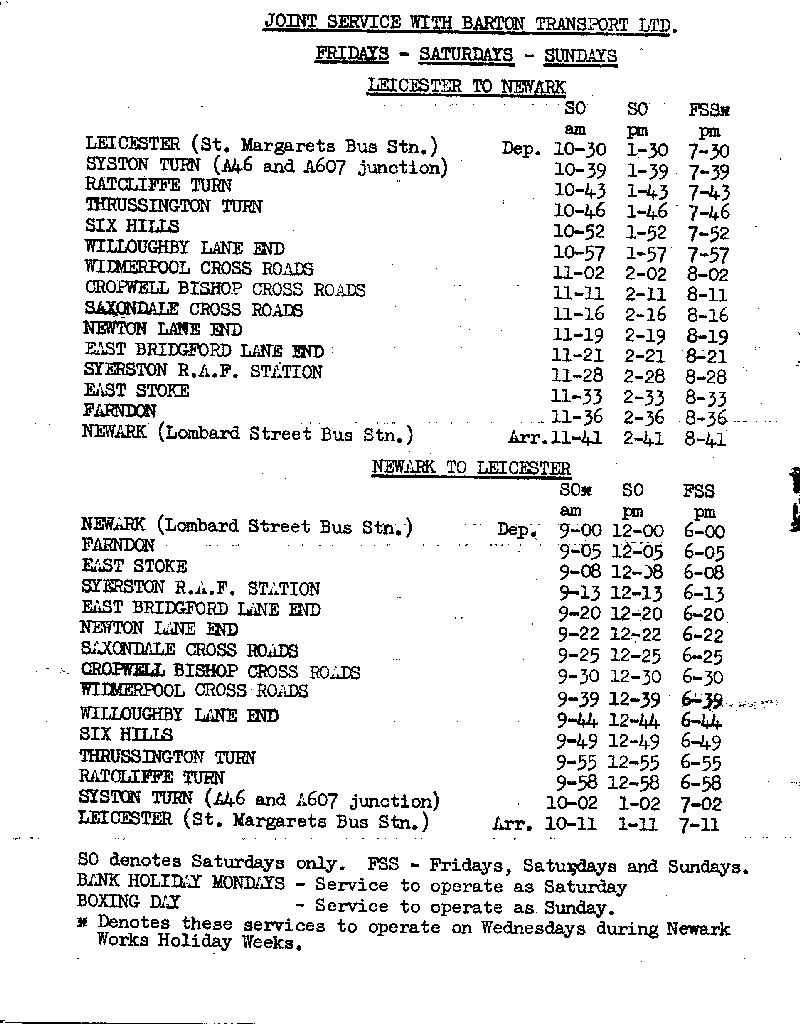 |
|||||||||||||||||||||||||||||||||||||||||||||||||||||||||||||||
| Gash double-decker KAL580 (fleet number
DD3) seen at Newark bus station in 1977 A 1948 Daimler CVD6 / Massey, it was new in November 1948 with a Strachan lowbridge body and was re-bodied to hignbidge by Massey in 1958. Withdrawn in August 1979. Sister vehicle DD2 is preserved by the LVVS at their museum near Lincoln. photo with thanks by johnmightycat1 |
|||||||||||||||||||||||||||||||||||||||||||||||||||||||||||||||
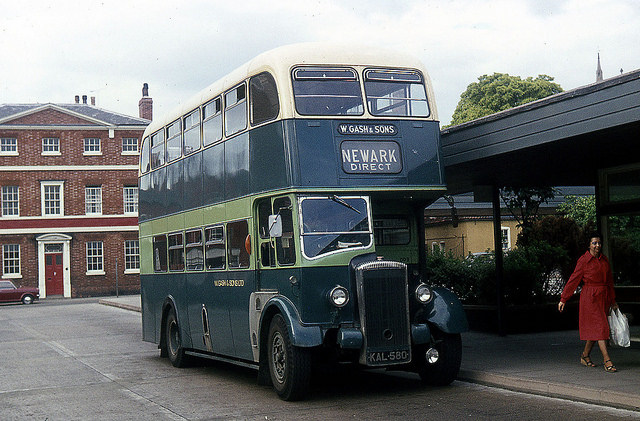
|
|||||||||||||||||||||||||||||||||||||||||||||||||||||||||||||||
|
|||||||||||||||||||||||||||||||||||||||||||||||||||||||||||||||
|
|||||||||||||||||||||||||||||||||||||||||||||||||||||||||||||||
